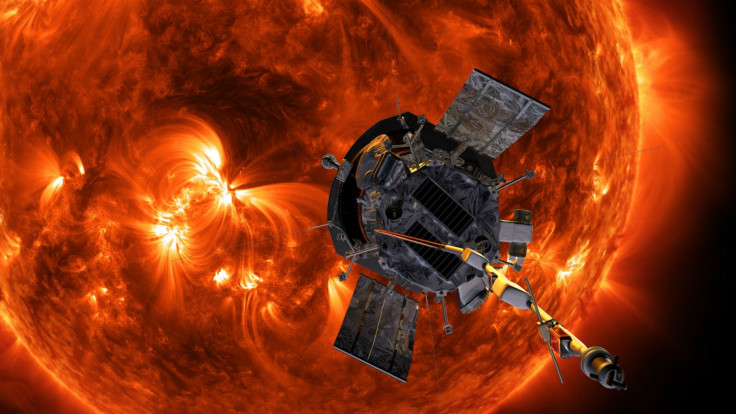Parker Solar Probe Launch Live Stream: Fastest Spacecraft To ‘Touch’ The Sun

In the early morning hours of Saturday, Aug. 11, NASA plans to launch its Parker Solar Probe on an ambitious mission to “touch” the sun and we all can watch it live.
The $1.4 billion car-sized probe, also known as PSP, will take to the skies on United Launch Alliance’s Delta IV rocket and fly towards the sun at speeds higher than any other spacecraft in history. It will head towards the sun’s extremely hot outer atmosphere or corona and come within 3.8 million miles of the star’s surface — closer than any other spacecraft has ever gone.
As NASA described, PSP will lift-off with 55 times more energy than what is required to head for Mars. The spacecraft will zoom through space at a maximum speed of 430,000 mph, but also use a series of flybys of Venus, our planetary neighbor, to slow down and get closer to the star.
“Parker Solar Probe uses Venus to adjust its course and slowdown in order to put the spacecraft on the best trajectory,” Andy Driesman, project manager for the mission, said in a statement. “We will fly by Venus seven times throughout the mission. Each time we fly by we get closer and closer to the Sun.”
It is estimated to make first close pass three months after lift-off and perform a total of 24 orbits over next seven years to make the closest approach.
“We’ll be going where no spacecraft has dared go before — within the corona of a star,” project scientist Nicky Fox added. “With each orbit, we’ll be seeing new regions of the Sun’s atmosphere and learning things about stellar mechanics that we’ve wanted to explore for decades.”
The corona, as one could expect, is heated up to millions of degrees. Such levels are more than enough to melt a spacecraft, its components, and everything, but Parker Solar Probe will be an exception, thanks to its super-strong, 4.5-inch thick heat shield and a range of heat-resistive materials.
This, combined with regular course-correction and pressurized deionized water, will keep temperatures as low as 85 degrees Fahrenheit on the other side of the shield and all other exposed components unharmed.
During the historic journey through the corona, the probe will take a series of measurements, giving us crucial insight into the solar wind, a stream of highly charged particles, and other outbursts occurring in the atmosphere.
Outbursts from the sun such as flares and coronal mass ejections can be violent on several occasions, with streams of charged particles bathing Earth at near light speeds. The information provided by PSP will aid space experts to better predict such events and keep them from affecting operational satellite, GPS systems, and electrical grids.
As per the current schedule, the Parker Solar Probe will take to the skies at 3:33 a.m. EDT from NASA's Kennedy Space Center in Florida. The event will be live streamed at NASA TV, but if weather conditions aren’t suitable for Saturday's 65-minute-long launch window, the agency will attempt the launch next day. It has till Aug. 23 to blast-off the spacecraft.
© Copyright IBTimes 2024. All rights reserved.





















